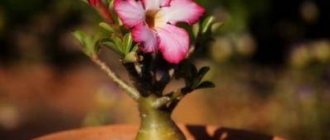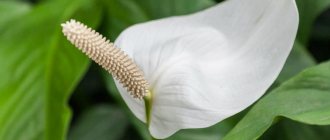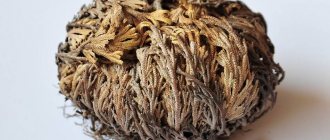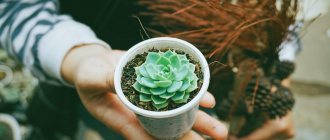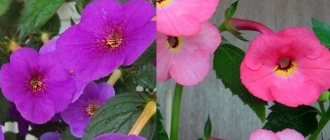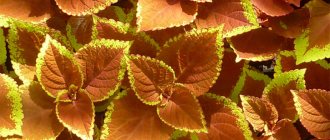Protea is a plant whose belonging to the exotic category can be judged at first glance. A favorite of florists, this outlandish representative of the Proteaceae family can become the highlight of a room or garden collection. The prickly multi-colored heads of huge inflorescences are spectacular, the foliage is original. And even though it is not easy to grow the many-sided protea, and there are not so many options for agricultural technology, even in indoor and greenhouse cultivation it will have time to show all its bright individuality.
The obstinate exotic Protea. © Thierry Leclerc
Exotic with a non-standard appearance and its representatives in garden and indoor culture
Succulents from the Proteaceae family with a non-standard appearance, water-accumulating leaves and underground organs captivate flower growers around the world with their non-standard flowering. The “prickly”, bold-looking heads of inflorescences resemble either artichokes, giant thistles and burdocks, or bottle brushes, but in terms of color and exoticism they will more than give a head start to any other plant. Proteas are far from easy to grow crops, but they will become the most original touch in a collection of plants, and then replenish the collection of the most original dried flowers.
Protea is a genus of plants in the Proteaceae family. The type species of the genus is Protea cynaroides.
Proteas combine hard, oblong-oval (less often linear or needle-shaped) leathery leaves with capitate inflorescences reaching from 5 to 30 cm in diameter. The inflorescences are surrounded by a thick wrapper and are decorated not with small flowers, but with surprisingly unusual bracts. Cone-shaped, with protruding needle-shaped “petals”, they stand out due to their original alternation of colors, unusually different shapes of bracts and sepals, and sweet nectar that attracts honey plants and hides inside the “heads”.
Proteas are not just diverse - they are inimitably multifaceted. It is no coincidence that this culture even received its name in honor of the son of Poseidon Proteus, who is capable of taking on any form. In their homeland, Australia and Africa, where proteas are found literally at every step, these plants can truly boast of extraordinary diversity. In our country, proteas are represented by a much more modest number of species.
Protea artichoke (Protea cynaroides). © Stan Shebs
The main representative of the proteas in our climate is the artichoke protea (Protea cynaroides). Its inflorescences reach 30 cm in diameter. The capitate inflorescences are not only large, but also spectacular. They are made variegated by the original involucres of bracts, painted in different tones. In its homeland, this Protea is known as the “pot of honey”: its nectar is used as a unique remedy for coughs. The white, pink, orange, yellow, and lilac tones of the Protea's colors are sometimes combined in the most variegated variations.
Creeping Protea (Protea repens). © Margret Maria Cordts
Also occasionally found on sale:
- large-headed protea (Protea coronata, formerly known as macrocephala) with bright large heads decorated with arranged peculiar stripes of involucres;
- creeping protea (Protea repens) with recumbent shoots, smaller foliage and smaller “spiny” inflorescence balls.
Protea coronata. © Andrew massyn
Popular types
The most popular types of protea flowers among gardeners are: Artichoke, or Royal, - has large (30 cm) inflorescences surrounded by needle-like wrappers. Thistle is a rare species that grows in nature in bush form, has the original ability to survive in nature after a fire, its seeds inside the inflorescences remain viable and are able to germinate on bare ground. Large-headed - has inflorescences and cup-shaped wrappers, is very popular with birds that can drink nectar from them using a long beak; these birds build nests from dry protea leaves. Creeping - has recumbent stems, smaller leaves and small balls of inflorescences with spines.
Use of protea in floriculture
Protea is one of the most original plants for winter bouquets. When dried, the inflorescence heads of the protea retain their shape well and practically do not change color. They can be considered as one of the exotic dried flowers with a long shelf life.
Protea also looks great in living bouquets. Provided frequent changes of water and good lighting, its inflorescences can last longer than any other flowers. Today this plant is recognized as one of the most fashionable for wedding bouquets. The undoubted advantage of Protea is the ability to create compositions intended as gifts for men.
Legends about the plant
The name Protea was given to the flower by Carl Linnaeus. Proteus, the son of the ancient Greek god of the seas Poseidon, knew how to transform into any living creature, water or fire. In the variety of appearance, one can see the similarity of Proteus’ talents with the flowers of the plant, which differ greatly depending on the specific species.
Proteas grow in rather harsh natural conditions: in arid areas, on soils not too saturated with natural substances. That is why the protea flower has become a symbol of courage, perseverance and vitality.
Protea growing strategy
As a perennial plant, protea can only be grown where there is no frost in winter. In the middle zone, this plant is not grown in open soil, even as a summer plant. The only option is to grow protea in indoor and greenhouse culture. Indoors, subject to cool wintering, Protea can be preserved from year to year. And if it is not possible to arrange a suitable wintering, then in indoor culture protea can be grown as a summer plant, throwing it away after flowering.
The conditions and care parameters required by the plant are the same for proteas growing as a houseplant and for beauties growing in a winter garden.
Protea bush. © porchulacas4ever
Bloom
The main value of the culture is bright, chic flowers. Their diameter can range from five to thirty centimeters. There are varieties with a sickly sweet aroma. Protea is grown in greenhouses and conservatories around the world.
Amazing flowers are used to create original bouquets, including wedding ones. They are able to maintain their freshness for up to twenty days.
Protea can also often be found dried in various compositions. After wilting, you need to trim the stem a few centimeters below the inflorescence. All parts of the flower are non-toxic. But for allergy sufferers, it is better not to keep the plant in the bedroom during the flowering period.
Comfortable temperature conditions
Proteas are heat-loving crops. And it is precisely their extreme sensitivity to fluctuations in conditions, the need to grow at consistently hot temperatures that does not allow them to be grown in the soil, even as a summer plant with a short growing season. In the warm season, from spring to mid-autumn, proteas need temperatures from 20 degrees Celsius (within room temperatures or hotter).
The winter regime for keeping protea should provide for a sharp drop in air temperature. Proteas should overwinter in a cool place, at a temperature not lower than 5 degrees Celsius, but not higher than 10 degrees. Without a cool winter, the protea will not bloom again and it is easier to throw away the plant, replacing it with new seedlings.
For Proteas, not only temperature conditions are important, but also good ventilation. This plant cannot grow when the air is stagnant; it needs a constant supply of fresh air and regular ventilation of the room. Protea is not afraid of drafts; the plant cannot be taken out into the fresh air in the middle zone (with the exception of a glazed balcony or loggia, or a glazed patio).
Protea laurifolia. © FarOutFlora
Botanical description of ruttia and photos of species of these evergreens
Some species of evergreen shrubs have been discovered in African countries, where they grow as floral evergreens. For gardeners, ruttia is attractive not only by its beautiful appearance, but also by the variety of shades of inflorescences, which can be pink, red, white or yellow, as shown in the photo below. Let's first read the botanical description of ruttia and look at photos of its species:
An exotic houseplant in the tropics can reach 2-3 meters, at home it rarely exceeds 1.5 meters in length. Quite often, ruttia can be grown as an ampelous indoor flower, and taken out into the garden in the summer. The stems of rutia are very flexible, often creeping and semi-lignified. They bear leaves with a glossy smooth surface. But, as gardeners note, alternately arranged ovoid leaves are found only on thinner shoots extending from more elastic stems, as shown in the photo below. The stems are often so flexible that it is quite possible to grow ruttium at home, running along a string as a vine.
Ruttia flowers are very original and have an irregular and unusual shape, vaguely reminiscent of the head of a hare or rabbit. Beautiful flowering can be observed all year round. These can be inflorescences of yellow, pink, white and red. A black head forms at the base of the flower, and the petals are turned up, forming “bunny ears.” After ruttia fades, a two-locular fruit-box is formed, the seeds from which spill out through cracks that form over time.
In general, this indoor plant is quite unknown in Russia, so if you want to surprise your household and neighbors, you can safely get one of the popular species. In addition, none of the species is distinguished by a finicky nature. And flowers of various colors and shapes look quite decent in a room interior. Let's talk about them further and look at their photos.
Watering and air humidity
Watering can be called the most difficult thing in caring for protea. This plant is extremely sensitive to waterlogging and does not respond well to too much watering. Treatments for Protea should be moderate. It is better to water frequently but sparingly than to overly saturate the soil with moisture. But the drought resistance of Protea, which it exhibits in the soil in regions with warm winters, is almost completely lost in indoor culture. The soil ball for Protea should not be allowed to dry out completely, just allowing the soil to dry out in the top layer and partially in the middle. The winter watering regime cannot be called anything other than meager: Protea at the dormant stage is watered only once a month.
You should also be careful when choosing water for irrigation. For protea, only soft and acidified water is suitable, to which a few drops of lemon juice or citric acid are added on the tip of a knife.
One of the best qualities of the capricious protea is its love of dry air. This plant not only does not need spraying, but any air humidification will not have a very good effect on the attractiveness of the inflorescences. Moreover, Protea loves hot air and is not afraid of being placed next to heating appliances.
Composition ideas
Protea looks great on its own, as one large exotic flower. To give the flower freshness, just add a few large leaves or fluffy flowers - peonies, roses, hydrangea. But remember: if the protea can withstand any blows of bad weather with honor, then you should be more careful with the rest of the plants.
An exotic flower in itself already looks unusual, so a good option is to add other unusual companions to it, for example, powdery succulents, as if dusted with dust.
This composition will fit perfectly into a wedding in a loft or modern style.
Idea! If you like bright colors, then dilute the ensemble with echinacea or scabiose.
A more gentle, romantic mood can be created by surrounding a large pastel-colored royal protea with roses or peonies of the same shade.
Protea feed
There is no need to apply fertilizers for this crop, with the exception of rare procedures aimed at restoring the acidity of the soil. By adding half the standard dose of fertilizers for rhododendrons or azaleas to the water for irrigation once every 1-1.5 months, you can maintain stable soil characteristics and supplement watering with acidified water. There are other strategies:
- during the active period of development, proteas are fed with a three-fold reduced dose of nitrogen fertilizers or special mixtures for azaleas once a month;
- systemic fertilizing is replaced by applying a full portion of fertilizers in early spring, a month after transplantation, and another fertilizing after the start of flowering.
Proteas will not tolerate excess nutrients: they are accustomed to poor soils and such preferences do not change in a greenhouse or indoor culture.
Protea artichoke (Protea cynaroides). © Patrick G
Transplantation and substrate
Proteas need frequent replanting. Young non-flowering plants are replanted annually, at the classic time. In early spring, change the container for them to a larger one and keep the earthen ball intact, with the exception of the top contaminated layer. Adult flowering proteas should be replanted only when the plant completely fills the earthen ball with roots.
Containers for proteas are chosen in the same way as for most succulents. Shallow and wide pots are more suitable for this culture.
The soil for protea must be chosen very carefully. A plant, accustomed in nature to dry and poor soil, in indoor and greenhouse cultivation should grow in a different substrate than usual. An earth mixture of equal parts of high-moor peat, pine needles and sand or a ready-made substrate for rhododendrons and azaleas is ideal for proteas. The key characteristics of soil are that they are well-drained, have a rough texture, and are acidic (pH 5.0 to 5.5).
Protea reproduction
Obtaining new proteas and growing these plants yourself requires diligence and patience. The thing is that protea seeds (and the beauty can only be propagated with them) are not found on sale very often, and the plant blooms 5-6 years after sowing. If waiting is not for you, look for ready-made protea seedlings.
Seeds are sown in the classic time for summer crops, in March-April. It is better to use a mixture of peat and sand in equal parts as a substrate. They are buried only to a depth equal to twice the diameter of the seeds themselves, and covered with sifted soil on top. It is not worth watering the substrate before the seeds are scattered: after covering them with soil, they need to be very carefully slightly moistened with a spray bottle, covered with glass or film and placed in the Protea’s favorite temperature range from 20 to 25 degrees Celsius. The process of germination is very long: the first shoots will sprout only after 5-6 weeks. The only method to speed up germination is to carry out cold stratification. For this, the seeds can be sown in damp sand and placed for 2 months at a temperature of 7-8 degrees Celsius (the refrigerator is perfect).
It is advisable to remove the cover from the crops immediately after germination. When 2-3 leaves of the protea appear, they need to be transplanted into individual containers. Throughout the entire period of growing for proteas, watering is carried out very carefully, so that drops do not fall on the sprouts themselves, and the substrate is only slightly moist (but does not dry out).
Increasingly, the cutting method is recommended for proteas: stem segments up to 10 cm long are rooted under a hood, provided there is good lighting and planting in a slightly moist peat-sand substrate.
LiveInternetLiveInternet
The Protea flower belongs to the huge family of Proteaceae, which has more than 1,400 species growing in the tropics and subtropics.
In its homeland, South Africa, protea is considered one of the most beautiful and beloved plants. It is no coincidence that one of its magnificent species, the royal protea, was chosen as a symbol of South Africa.
The meaning of the flower The name of this unusual plant was given by Carl Linnaeus. Fascinated by the variety of its shapes and colors, he named it “Protea”. The flower, the meaning of whose name the Swedish naturalist connected with the name of the ancient Greek sea god Proteus, who took on different forms and appeared either in the form of strange birds and animals, or in the form of water and fire, amazes with its beauty.
Indeed, even in one copy of this plant you can find leaves of different colors and configurations. Therefore, these exotic representatives of the flora, thanks to their yellow, pink, purple leaves, shaped like fancy bowls and like starfish and urchins, were associated by Linnaeus with the son of Poseidon.
Features of Protea Since the natural conditions in which the protea flower lives are quite harsh - monsoon climate, depleted soil and frequent droughts - this is also reflected in the appearance of the plant. All Proteaceae, both small trees and shrubs, have leathery or needle-like leaves. They tend to form fairly large groups. In this way, they are protected from strong winds, and the shade allows the soil not to overheat, retaining moisture, because here it is worth its weight in gold. That is why many species have special underground stem organs that can accumulate and hold moisture.
The main features of protea are exotic, chic flowers, distinguished by the brightness of their colors, and the diameter of some of them reaches 30 cm. Some types of protea The protea flower, no matter what species it belongs to, always causes admiration. However, there are some species that truly amaze with their exotic beauty.
Protea artichoke is deservedly considered the most spectacular specimen. Thanks to its very large inflorescences, dressed in bright wrappers of leaves, local residents call it “king protea”, and since the flowers are filled with sweet nectar, another name has been assigned to it - “honey pot”.
Protea large-headed is distinguished by the fact that the wrappers of its leaves form inflorescences similar to large bowls. Moreover, it is surprising that this type of protea is pollinated by the so-called sugar bird, which feasts on the nectar of the flower.
Protea "Blackbeard" has a very rare color, as reflected in its name. The inflorescences are white and pink, framed by a black and purple edge, which looks like a real “beard”.
Cultivation In South Africa and Australia, proteas are successfully grown in gardens and used to decorate parks. But the climate of the Northern Hemisphere is not suitable for growing proteas in open ground. They can only be found here in greenhouses and botanical gardens. Nevertheless, now here too, lovers of exotic plants are engaged in these flowers.
It is difficult to grow proteas at home, since they must be provided with comfortable conditions, namely: an abundance of sunlight; light on cloudy days; well-ventilated area; air temperature in summer is not lower than + 25º C (in winter + 5º C is allowed).
The protea flower is propagated by seeds, and for good germination, stratification is recommended: the flowers are placed in damp sand and kept in the refrigerator for several weeks. Before sowing, the seeds are placed in warm water for a day.
Ready-made soil, which is used for azaleas, is suitable for planting. If you add sand and perlite to it, this will only benefit the protea.
Pots should be chosen wide and not very deep. It is advisable to place expanded clay at the bottom and pour soil on top. The depth of planting seeds should be 2 times their size. The planted seeds are watered with boiled water and covered with polyethylene film or glass. The cover must be removed periodically for ventilation.
Care After about 5-7 weeks, the seeds will germinate, and when two small leaves appear, the shelter is removed and the pot is placed in a place where there is a lot of sunlight. Now that you have sprouted a protea flower, how to care for it?
The main thing is not to over-water it, as this can lead to the death of fragile seedlings. Water should only be used that has settled and slightly acidified. Protea does not need fertilizers. Now, having provided the flower with light and ventilation of the room, you need to wait until it grows, and this happens quite slowly.
Growing a protea flower is a long and labor-intensive process. But for those who are patient enough, this exotic African rose will eventually provide beautiful flowers.
A protea flower grown from seeds at home will begin to bloom in 5–6 years.

